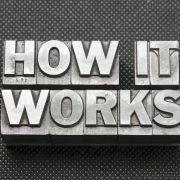Does a Self-Directed IRA Have Enough Liquidity?
In a recent post at Forbes, in which the publication talked about Self-Directed IRA advantages and disadvantages, readers will notice that an interesting “disadvantage” popped up: the issue of liquidity. For a Self-Directed IRA investor, it can indeed be more difficult to sell a house than it is to click on a different IRA and sell a stock. However, this is a black-and-white view of Self-Directed IRAs that does not quite get to the heart of how Self-Directed IRAs work. Let us explore that subject by addressing what liquidity means—and how investors can be in charge of determining the liquidity of their own portfolio.
What is Liquidity, Anyway?
Throw away the chemistry books. Liquidity in the context of investing means two things:
- Your ability to sell an asset quickly.
- The selling of that asset quickly having little bearing on the price you are able to fetch.
That means that in order for an asset to be considered “liquid,” you should be able to move in and out of it relatively easily. With this definition in mind, it means that someone looking from the outside in at a Self-Directed IRA may find them not to be liquid. After all, a house is not as liquid as a public stock. By diversifying into long-term, less-liquid investment, the logic goes, a Self-Directed IRA does not have access to the same liquidity as someone investing in different means.
Deciding for Yourself in a Self-Directed IRA
However, this misses the point. The point of a Self-Directed IRA is that the investor is in charge of their assets. True, the investor typically chooses a Self-Directed IRA to diversify out of the stock market into alternative asset classes like precious metals and real estate. Private companies are less liquid than stock in public companies, as well. However, it is important to remember that with a Self-Directed IRA, the investor is in charge of deciding just how liquid they need their portfolio to be. And in some cases, they do not need to decide. They know exactly what they want from the get-go.
Different retirement assets will typically have different amounts of liquidity. Furthermore, some investors may find they do not want a highly liquid account at all—that they want to continue to invest in real estate, for example, believing it to be a long-term store of value. This is up to every investor with a Self-Directed IRA.
Additionally, Self-Directed IRA assets do not have to be mutually exclusive with other types of IRAs or retirement accounts. An investor is free to choose the portfolio as they see fit.
How a Self-Directed IRA Works
It is true that investing in stocks and mutual funds can be a highly liquid form of investing. An investor who has a retirement account can play the market as they see fit. However, it is also important to note that investors in retirement accounts are often thinking about the long-term future. That means that they may not prioritize the liquidity of investments, especially if their time horizon for a specific investment may be as much as 40 years. In some cases, investors may even keep assets within a retirement account, which is possible indefinitely with a Self-Directed Roth IRA.
Investors have different priorities and different strategies, and that is a fact that is not going to change any time soon. For some investors, liquidity may be important. For others, the long term may be more valuable. The key with a Self-Directed IRA is that you will be able to decide. Interested in learning more about Self-Directed IRAs? Contact American IRA, LLC at 866-7500-IRA (472) for a free consultation. Download our free guides or visit us online at www.AmericanIRA.com.







